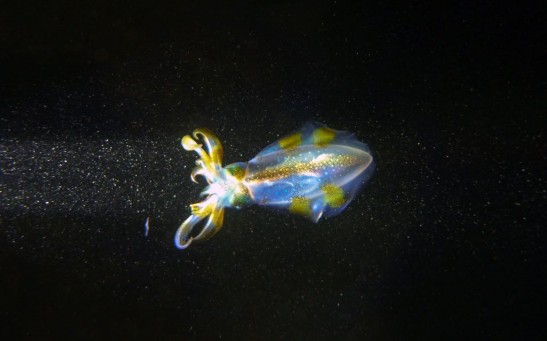Tags: Extraterrestrial Life

NASA Seeks Help From Theologians to Understand How Humans Will React to Life Between Earth and Beyond

People Who Claim Seeing Unidentified Aerial Phenomenon Have Something Unique In Their Brains, Analyses Show Signs
Fermi Paradox Explained: Are We Alone in the Universe? Is Drake Equation the Solution?
Penguin Feces Containing Element Usually Found on Venus Discovered; Scientists Baffled About Phosphine's Origin
Hycean Worlds: Studying 'Mini-Neptunes' Could Advance Search for Extraterrestrial Life
Black Holes as Energy Sources of Advanced Civilization? Theoretical Megastructures Dyson Spheres May Catch Energy Up to 100 Million Suns
Exoplanets With "Goldilocks Zone" Could Host Life, NASA Suggests
Proxima Centauri Spits Out Biggest Solar Flare, But Experts Still Consider It a Habitable Region

Radio Astronomers Close to Unusual Moment in Proxima Centauri; Did They Miss A Call?

Aliens From Almost 1,000 Nearby Stars Could Be Looking Straight Back at Us
"Superhabitable" Exoplanets May Be Better Than Earth
Fully Automated Device Can Detect Signs of Life in Space
50-Year-Old Theory Proven: Extraterrestrial Life Forms Can Harness Blackholes
China's FAST Will Start Searching the Cosmos for Extraterrestrial Life in September

Scientists Plan to Study Dead Stars and Exoplanets to Look for Fingerprints and Other Signs of Life
Scientists Say Aliens Are Watching Us
Dinosaur Proteins: From Evolution To Biomaterials To Extra-Terrestrial Life
Aliens May Be Shifting From One Planet To The Other In The Trappist-1 World
Discovering Another Earth: Why NASA's Latest Find, The 7 Earth-Like Planets, Matters?
NASA Finds Evidence Of Organic Material And Life Possibilty On Planet Ceres
Most Popular

The Air Pollution Climate Link: What Environmental Science Reveals About Our Changing Planet

Solar vs Wind vs Hydro Energy: Which Renewable Energy Is Most Effective Power Source?

Can EV Technology Compete in Motorsports? Inside the Electric Racing Future & EV Performance

Carbon Footprint 101: What It Is and Simple Ways to Reduce Yours





